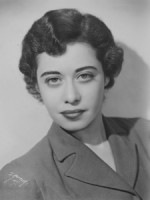Column Name
Title
Louise Behrend (Diploma ’43, violin) visited her neighborhood’s music teacher in her hometown of Washington, D.C., at the age of 3 to inquire about violin lessons. Though he was charmed, the teacher wouldn’t hear of it. He insisted she come back when she was older, and after some piano lessons so he didn’t have to teach her to read music. “I started at age 10, which is late by today’s standards,” Behrend, 93, said in a recent interview.
Body
It’s strange to envision this scenario today—partly because of Behrend’s early efforts in developing musical education for children—but music lessons weren’t given to young children when she was a girl.
The young Behrend persisted, sitting in on her sister’s music lessons and constantly inquiring, “What’s that?” until she could navigate a score. She trained her young ear by watching her father, a doctor, play piano every night before dinner, and listening to the family’s record collection—a large one for the time.
“My uncle invented the flat disc recording,” she said, referring to the inventor Emile Berliner. “So we had a lot of records early on.”
At age 10, she was given her first violin. At 16, she graduated high school and left for New York to attend the Juilliard Graduate School and the Institute of Musical Art, buildings she described in an interview in the American Suzuki Journal (which she would later edit) as being side by side and sharing many teachers, though not yet fully merged into the modern Juilliard School. When asked to share any special memories from her early days at the School, her answer is somewhat surprising:
“The orchestra was playing a concert and I was sitting on the outside of the second row, right next to [the] piano. And the pianist was feeling the keys without touching them, and while I watched his hands, I realized—my father had those same hands. My father was a doctor, but he had those same hands! I was fascinated.”
This moment, though small, resonates deeply with Behrend’s lifelong philosophy of musical education: that anyone can, and should, learn and have access to instruments and musical theory. She began teaching younger students at the School (in what would become today’s Pre-College Division) and, upon graduating, was one of the few musicians invited to remain on as staff—she joined Juilliard’s College Division faculty in 1999, and has also taught in the Evening Division and Summer School. Behrend, who was honored with the status of faculty emerita this spring, took pride in her teaching as well as her performing, and had made excellent progress at both when, in 1964, Dr. Shinichi Suzuki brought his first group of students to Juilliard.
“I thought I was doing fairly good teaching, but I wasn’t getting the results he had,” Behrend recalled.
While on tour in Japan, Behrend asked her manager to arrange for her to observe Suzuki once more. Behrend went on to spend two weeks in Matsumoto, Japan, where Suzuki held summer classes in the mountains, and observed his methods and the student recitals. As a teacher, Behrend was invigorated; as a student, it vindicated her own belief that children can and should be taught music, the earlier the better.
When she returned to the States, Behrend wrote an article on her experiences in Japan, lauding Suzuki’s educational philosophy, and began employing his techniques in her own classroom. By 1970 she had established herself as one of the foremost teachers of the Suzuki method in the United States, and began to gather a following of students and teachers. That summer, Behrend started a small teaching intensive with approximately 20 young students and three professional teachers, called “apprentices.” By 1973, the program had more than 50 students and was officially dubbed “The School for Strings.” The next year Behrend was teaching across from Lincoln Center, next door to her beloved Juilliard, with two new titles connected to her name: founder and director.
Today, she laughs when discussing her institution’s history. “I inadvertently started a school,” she said.
Though she remains extraordinarily humble and credits her mother, a math teacher, and her father, the doctor-pianist, for instilling a love of teaching and music, credit must be given to her intense dedication and self-education. This is a woman who, at age 3, fought for formal training; at 6, was reading scores; at 16, left her home to attend Juilliard for professional training; and, at 47, embarked on an entirely new method of preparing young violinists. This is also a woman who, now 93, still loves the violin.
“The fiddle still comes out of the case every day,” she said. “If it doesn’t, it looks at me like… ‘why?’ An instrument has to be kept alive by playing.”
Doubtless then, there are thousands of fiddles, and fiddlers, that owe Behrend deep, deep thanks.





